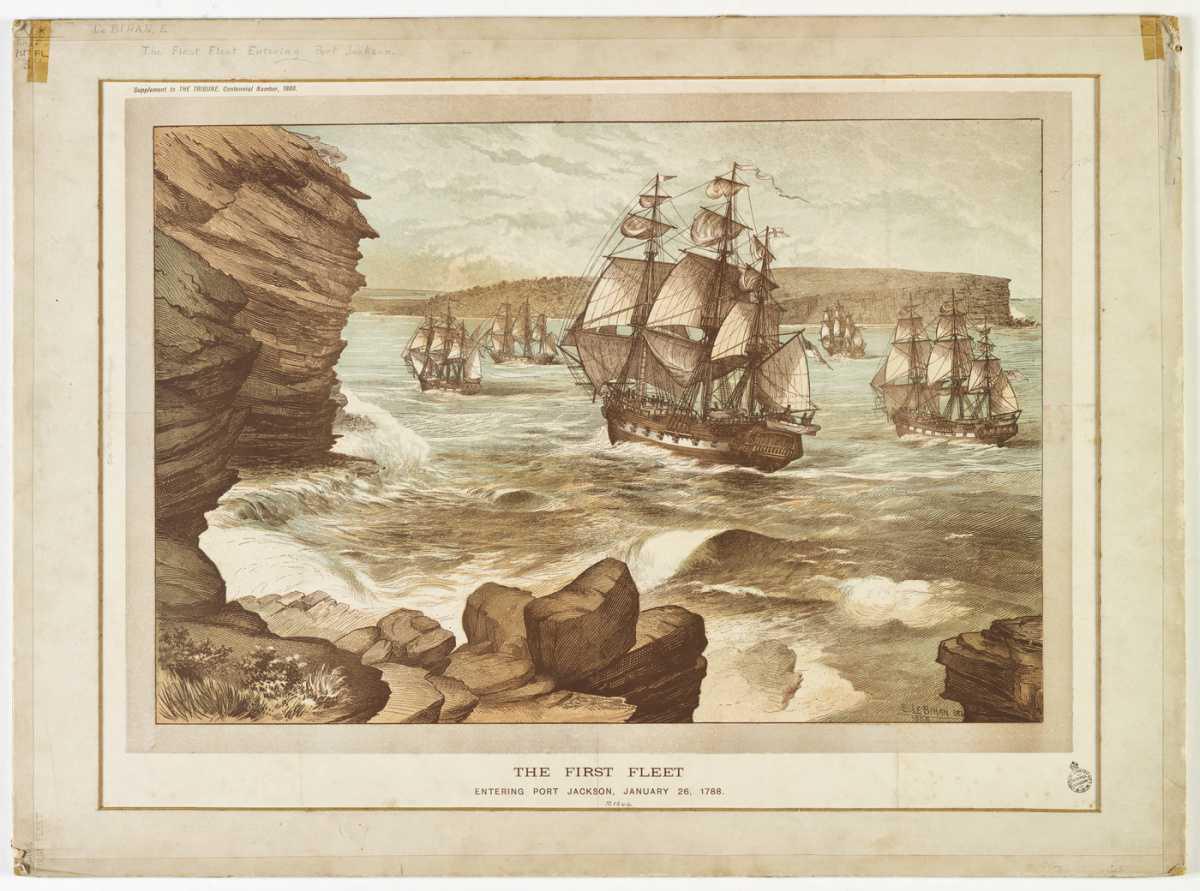First Fleet entering Port Jackson 1788 (drawn 1888) – [Public domain], via Wikimedia Commons
Arthur Phillip is also commemorated with a memorial at Westminster Abbey. The dedication of the memorial was held in 2014 and more information about the memorial stone can be found – here.
At the service the following words were read:
“This modest, yet world-class seaman, linguist, and patriot, whose selfless service laid the secure foundations on which was developed the Commonwealth of Australia, will always be remembered and honoured alongside other pioneers and inventors here in the Nave: David Livingstone, Thomas Cochrane, and Isaac Newton.”
There are 20 known accounts of the First Fleet in the form of journals and letters. These describe the journey, first impressions of New South Wales and encounters with the indigenous population. A letter, in journal form, by the First Fleet surgeon George Worgan (1757-1838), described the transportation of a piano (the first to arrive in Australia). Worgan came from a London musical family and he joined pipers and drummers in the first rendition of ‘God Save the King’ – sung at Sydney Cove on 7 February 1788. The piano was to remain in Australia in the possession of Elizabeth Macarthur. As she described in a letter in 1791:
“Our new house is ornamented with a piano-forte of Mr. Worgan's. He kindly means to leave it with me, and now, under his direction, I have begun a new study; but I fear, without my master, I shall not make any great proficiency. I am told, however, that I have done wonders in being able to play off God Save the King, and Foot's minuet, besides that of reading the notes with great facility.”
Listen to Foote’s Minuet – here – piano Robert Williams
The First Fleet piano has become quite famous and is claimed to now reside in Perth, Western Australia. You can read about it – here. It was made at 4/10 Broadwick Street Soho, W1F. The building no longer exists, and the street was formerly called Broad Street. The street is still worth visiting as further along Broadwick Street, outside the John Snow pub, once stood the water fountain identified (by Dr John Snow) as the source of the 1854 cholera outbreak.

